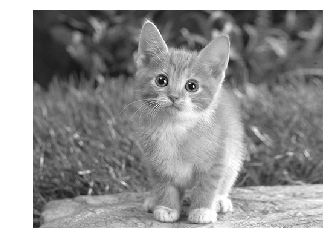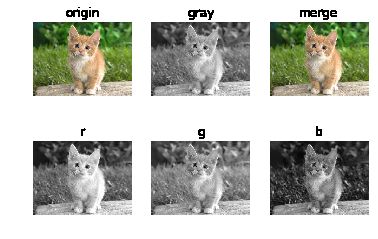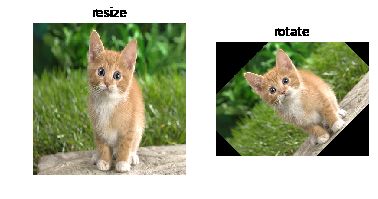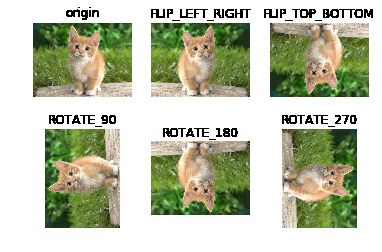python图像处理:图像通道、变换及裁剪
图像通道
彩色图像转灰度
from PIL import Image
import matplotlib.pyplot as plt
img=Image.open('/home/keysen/caffe/examples/images/cat.jpg')
gray=img.convert('L')
plt.figure("beauty")
plt.imshow(gray,cmap='gray')
plt.axis('off')
plt.show()
Output
使用函数convert()来进行转换,它是图像实例对象的一个方法,接受一个 mode 参数,用以指定一种色彩模式,mode 的取值可以是如下几种:
· 1 (1-bit pixels, black and white, stored with one pixel per byte)
· L (8-bit pixels, black and white)
· P (8-bit pixels, mapped to any other mode using a colour palette)
· RGB (3x8-bit pixels, true colour)
· RGBA (4x8-bit pixels, true colour with transparency mask)
· CMYK (4x8-bit pixels, colour separation)
· YCbCr (3x8-bit pixels, colour video format)
· I (32-bit signed integer pixels)
· F (32-bit floating point pixels)
通道分离与合并
from PIL import Image
import matplotlib.pyplot as plt
img=Image.open('/home/keysen/caffe/examples/images/cat.jpg') #打开图像
gray=img.convert('L') #转换成灰度
r,g,b=img.split() #分离三通道
pic=Image.merge('RGB',(r,g,b)) #合并三通道
plt.figure("beauty")
plt.subplot(2,3,1), plt.title('origin')
plt.imshow(img),plt.axis('off')
plt.subplot(2,3,2), plt.title('gray')
plt.imshow(gray,cmap='gray'),plt.axis('off')
plt.subplot(2,3,3), plt.title('merge')
plt.imshow(pic),plt.axis('off')
plt.subplot(2,3,4), plt.title('r')
plt.imshow(r,cmap='gray'),plt.axis('off')
plt.subplot(2,3,5), plt.title('g')
plt.imshow(g,cmap='gray'),plt.axis('off')
plt.subplot(2,3,6), plt.title('b')
plt.imshow(b,cmap='gray'),plt.axis('off')
plt.show()
Output
裁剪图像
从原图片中裁剪感兴趣区域(roi),裁剪区域由4-tuple决定,该tuple中信息为(left, upper, right, lower)。 Pillow左边系统的原点(0,0)为图片的左上角。坐标中的数字单位为像素点。
from PIL import Image
import matplotlib.pyplot as plt
img=Image.open('/home/keysen/caffe/examples/images/cat.jpg') #打开图像
plt.figure("beauty")
plt.subplot(1,2,1), plt.title('origin')
plt.imshow(img),plt.axis('off')
box=(80,100,260,300)
roi=img.crop(box)
plt.subplot(1,2,2), plt.title('roi')
plt.imshow(roi),plt.axis('off')
plt.show()
Output
几何转换
Image类有resize()、rotate()和transpose()方法进行几何变换
图像的缩放和旋转
re_img = img.resize((200, 200))
rot_img = img.rotate(45) # 逆时针角度表示
plt.figure("cat")
plt.subplot(1,2,1) , plt.title('resize')
plt.imshow(re_img), plt.axis('off')
plt.subplot(1,2,2) , plt.title('rotate')
plt.imshow(rot_img) , plt.axis('off')
plt.show()
Output
转换图像
dst = im.transpose(Image.FLIP_LEFT_RIGHT) #左右互换
dst = im.transpose(Image.FLIP_TOP_BOTTOM) #上下互换
dst = im.transpose(Image.ROTATE_90) #逆时针旋转
dst = im.transpose(Image.ROTATE_180)
dst = im.transpose(Image.ROTATE_270)
Output
transpose()和rotate()没有性能差别




